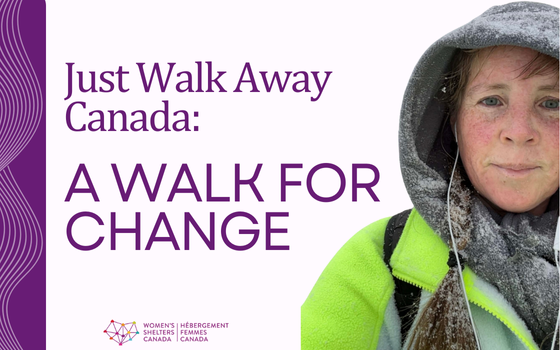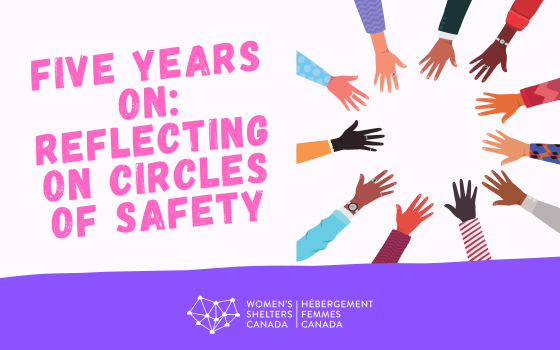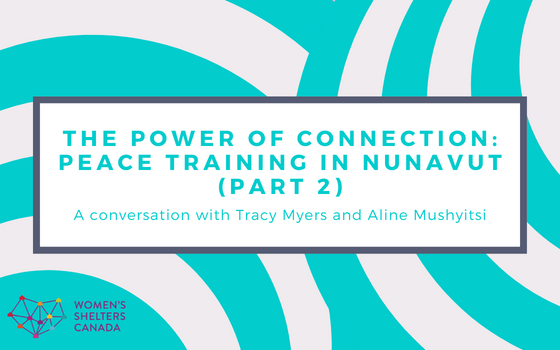
Kyla Tanner
Last year, former Women’s Shelters Canada (WSC) Research and Policy Director, Krys Maki, gave us an exciting preview of the new Second Stage Transitional Housing (SSTH) New Build project. Made possible by a generous $2 million grant from the Slaight Family Foundation, the project will see WSC support up to 16 new second stage shelters across Canada over four years.
With the project now well underway and the recruitment of Kyla Tanner, WSC’s Development Project Manager, we wanted to catch up with her to get a better idea of how things are shaping up!
Jed Nabwangu: Hi Kyla! So great to sit down with you. Maybe we could start with some general background on the project’s unique name.
Kyla Tanner: Definitely! The “second stage” piece was actually inspired by WSC’s Breaking the Cycle of Abuse and Closing the Housing Gap report that came out in 2020. The report reveals a lack of second stage shelters across the country, so our aim for the project is to create more units, which speaks to the “new build” part. While it would be great if we could expand down the road to include renovations and repairs, which we know are needed, this project is focused on creation. Finally, “transitional housing” makes it clear that we’re focused on that key piece between emergency and third stage housing for women and children fleeing violence.
JN: How are you choosing which provinces or territories to focus on?
KT: We’re open to supporting groups from across the country! We understand that some provinces have operational support already – such as Quebec and British Columbia – and given our small internal capacity, we want to make sure we’re giving as much of our time and resources as possible to those without this help. We anticipate this being organizations in rural, remote, and northern areas where there are also limitations in hiring staff to assist with project management, which is a service we are offering for free in this program.
JN: What have you observed in terms of shelter needs and interests as they pertain to the project?
KT: We’ve observed a disparity between organizations across the country, with some having to work much harder due to a lack of operational funding. In the first 48 hours of launching our survey, we received more than 50 responses, which reflects an obvious need. Most submissions are from organizations with small populations who are at different stages of project development (e.g. some are looking for help with grant applications, others with construction, etc.)
A key part of the project is acknowledging the reality that creating a new building is a full-time job and shelters simply do not have the bandwidth for it despite there being a huge need for more units. It often means learning a new language when speaking to municipal planners, architects, construction managers, or the funder, and that’s what we’re trying to use our expertise to assist with. I want to emphasize that we’re not doing any of the decision-making; instead, we’re there to help folks understand when key decisions need to be made and be a helpful in-between as needed.
JN: Why is there a need for a project like the Second Stage Transition Housing New Build Project? Where do second stage shelters fit in the spectrum of VAW supports?
KT: Often, the affordable housing spectrum can be thought of as quite linear, with emergency shelters being one extreme and permanent housing being the other. Second stage shelters typically follow emergency shelters on the spectrum. They’re transitional housing that is specific for women and children fleeing violence, so they must be created with the necessary supports and safety and secure features. We know that this linear spectrum doesn’t always reflect reality with, for example, some folks needing to extend their stay in emergency housing due to a lack of second stage shelter availability and affordable housing. While it’s perfectly ok for folks to take as much time as they need in whatever scenario, we also want to alleviate some of these systemic discrepancies by creating more units through this project. We don’t want folks to feel pressured to move through this linear spectrum so we’re really trying to make safety one of the key features.
Second stage shelters have been proven to save lives by offering wrap-around support and afford survivors additional time and space to heal and transition to a life free from violence. We also know there aren’t nearly enough of these spaces and shelters find the process to build them very cumbersome, which is where our project comes in.
JN: How does this project challenge existing bureaucratic funding models and make accessing funds more accessible to shelters?
KT: While we are accepting of the bureaucratic model and will aim to work within its framework, we also plan to advocate for change. Our team has more familiarity with application processes but the job does not end there. Once funding is acquired, timelines need to be followed and staff need to be hired so that conditions can be fulfilled. Our goal is to assist the shelters in meeting requirements so that organizations can focus on operating their existing housing.
In terms of advocacy, the Canadian Mortgage and Housing Corporation (CMHC) has been trying to make its applications more streamlined, but this could be further improved. We also want to push for more change in the phases that come after. Whether it’s alleviating the risk that organizations face in trying to fulfill conditions or challenging prerequisites like requiring shelters to carry a mortgage to qualify for funding, we want to bring these issues to the table. Thanks to the long-standing relationship between WSC and CMHC, I am confident our advocacy can make an impact.
JN: What would you say is the biggest goal WSC hopes to achieve with this project?
KT: The biggest goal would be to support more than 16 shelters across the country, for more than four years. If we’re able to continue to provide this type of service for shelters indefinitely, it would respond to the constant urgent need. We also want to continue our advocacy and inspire systemic change. Women and children experiencing violence deserve nothing less.
For more information, visit the SSTH New Build project webpage or reach out to Kyla at ktanner@endvaw.ca
This interview has been edited for length and clarity.




